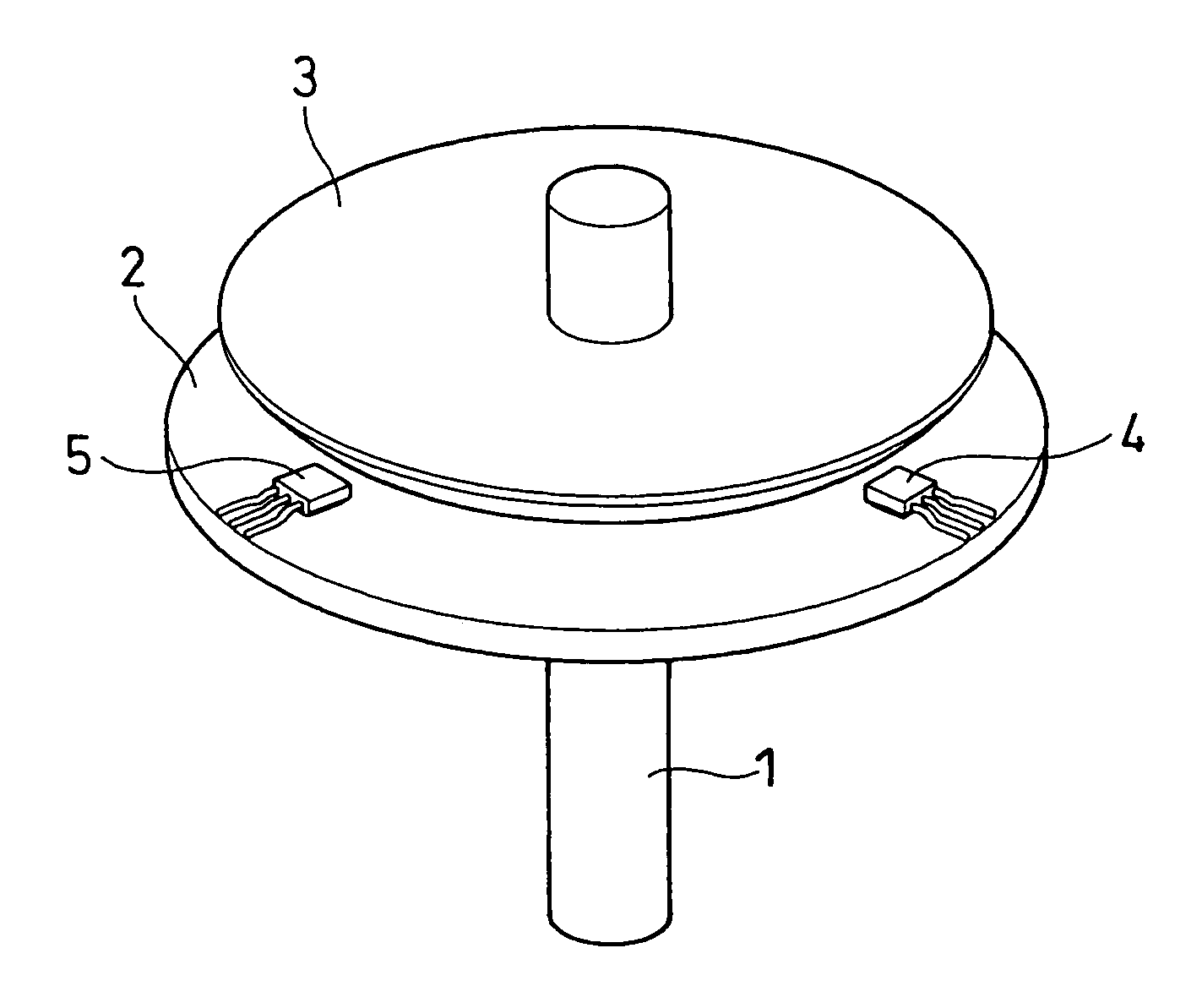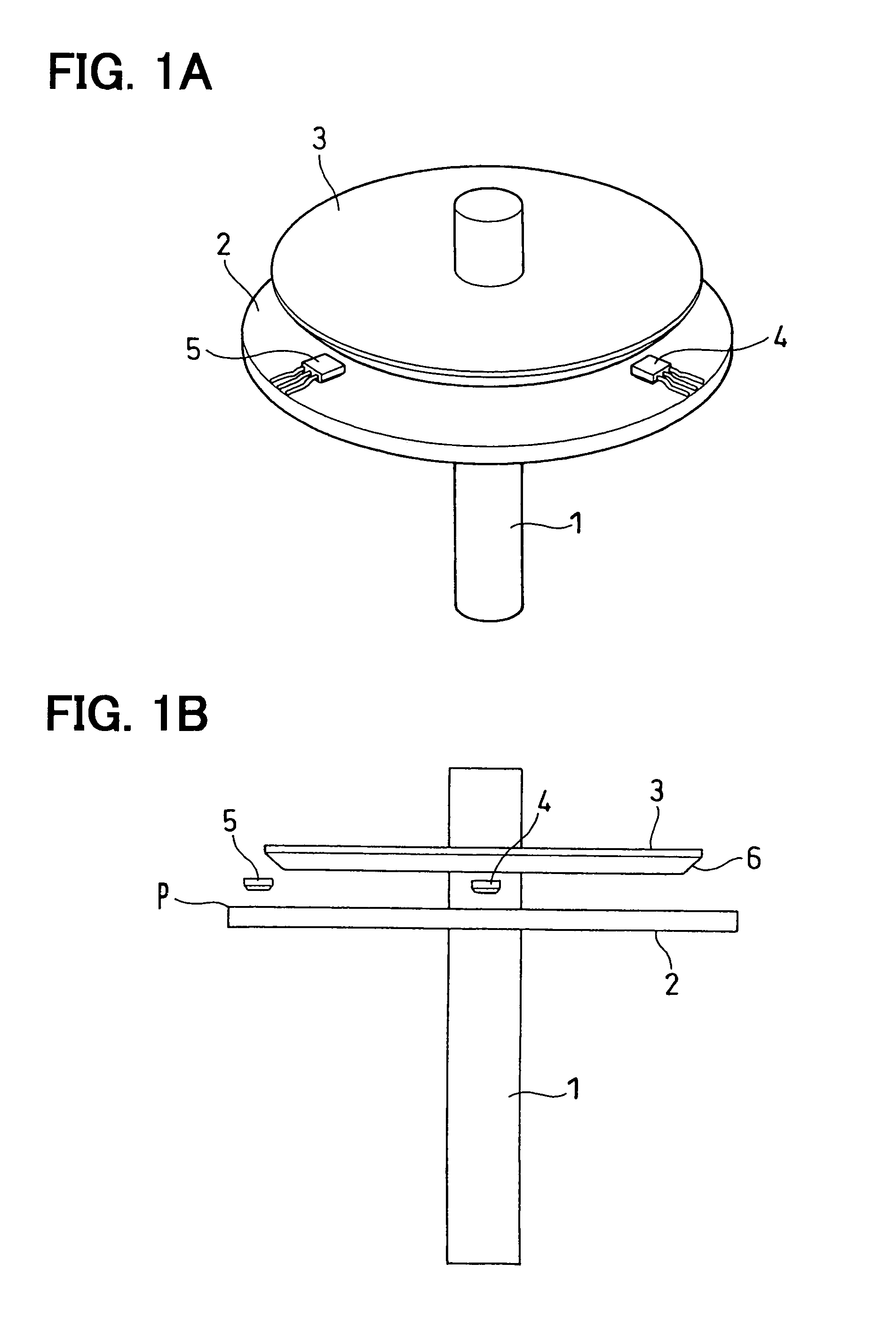Rotation angle detecting device
a detection device and rotating angle technology, applied in galvano-magnetic devices, galvano-magnetic hall-effect devices, instruments, etc., can solve problems such as and achieve the effect of preventing the deterioration of the precision of the detection of angles
- Summary
- Abstract
- Description
- Claims
- Application Information
AI Technical Summary
Benefits of technology
Problems solved by technology
Method used
Image
Examples
first embodiment
[0043]A first embodiment will now be described with reference to FIGS. 1A to 4B.
[0044]Referring to FIGS. 1A and 1B, the fundamental structure of a rotation angle detecting device will be first described. FIG. 1A is a schematic perspective view of the rotation angle detecting device, and FIG. 1B is a schematic side view thereof.
[0045]The rotation angle detecting device according to the first embodiment comprises a rotational axis 1, a magnet 2, a magnetic flux concentrator 3, and first and second magnetic sensors 4 and 5. The rotational axis 1 rotates integrally with a rotary member (for example, a throttle valve), the rotation angle of which is detected. The magnet 2 and the magnetic flux concentrator 3 rotate integrally with the rotational axis 1. The first and second magnetic sensors 4 and 5 are secured to a fixed member (for example, a substrate secured to a throttle housing).
[0046]The magnet 2 is a permanent magnet which is secured to the rotational axis 1 and rotates integrally...
third embodiment
[0068]A third embodiment will now be described with reference to FIG. 6.
[0069]A first chip 7, in which two first magnetic sensors 4 are enclosed, is disposed in a position in which the first magnetic sensor 4 according to the foregoing first embodiment is disposed. One of the first magnetic sensors 4 has the magnetically sensitive surface which is oriented in the axial direction of the rotational axis 1, and the other of the first magnetic sensors 4 has the magnetically sensitive surface which is oriented in one of the radial directions of the rotational axis 1. The outputs of the two first magnetic sensors 4 are averaged to be used in angle calculation.
[0070]A second chip 8, in which two second magnetic sensors 5 are enclosed, is disposed in a position in which the second magnetic sensor 5 according to the foregoing first embodiment is disposed. One of the second magnetic sensors 5 has the magnetically sensitive surface which is oriented in the axial direction of the rotational axi...
PUM
 Login to View More
Login to View More Abstract
Description
Claims
Application Information
 Login to View More
Login to View More - R&D
- Intellectual Property
- Life Sciences
- Materials
- Tech Scout
- Unparalleled Data Quality
- Higher Quality Content
- 60% Fewer Hallucinations
Browse by: Latest US Patents, China's latest patents, Technical Efficacy Thesaurus, Application Domain, Technology Topic, Popular Technical Reports.
© 2025 PatSnap. All rights reserved.Legal|Privacy policy|Modern Slavery Act Transparency Statement|Sitemap|About US| Contact US: help@patsnap.com



